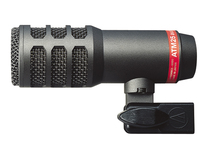|
If you look closer at your reverb processor in your rack, you will notice that there is a control called "Pre-Delay." Pre-delay on a reverb is an extremely useful control for tweaking how fast or slow the onset of reverb happens. If you find that the reverb you are using smears too much of the image of your instrument, thus losing definition, you can tell your reverb to wait a few moments before actually kicking in and being heard. This will allow the initial transient of the sound source to come through, and then the reverb will start..thus preserving the clarity of your instrument, but having the sweetness of verb as well (kind of like having your cake and eating it too! Lol!). A good place to start is anywhere from the 30ms - 100ms. Remember, that in a real world situation, sound travels at about 1 foot per millisecond. So, if you want the reverb to behave as if there are walls 100 feet from the sound source, then you can set your pre-delay to 100 ms. This in turn will make the reverb behave as what you might hear in a real situation...where the sound wave will travel 100 feet before it bounces back and the onset of reverb happens.
0 Comments
There are a ton of good kick mics out there like the Shure Beta 52, Audix D6, the AKG d112 & D12, EV Re20 (not just a kick mic), Audio Technica AE2500, etc, etc, etc... I've actually used all of these microphones, and yes they are great kick mics, but what about some unsung kick drum microphone heroes? Some of these are true sleeper mics! Here Are Some Of My Favorites: (Click on Picture For Descriptions) |
Do you like vintage recording gear and articles? You should visit our sister site: The Vintage Audio Portal!
**Advertise With Us! We have thousands of visitors a day. Contact us here to learn more.
Archives
August 2021
Categories |






